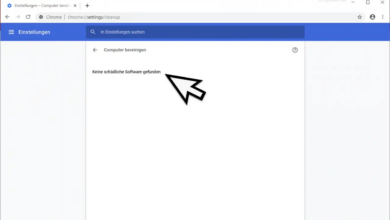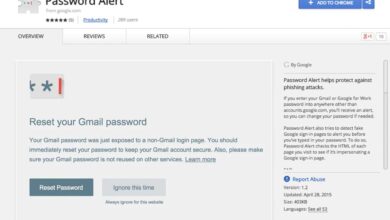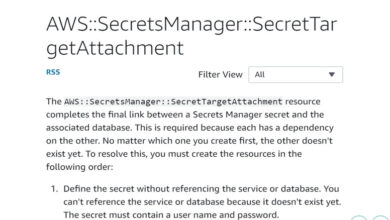
Frictionless Zero Trust Security Lower Risks, Boost ROI
Frictionless zero trust security how minimizing friction can lower risks and boost roi – Frictionless Zero Trust Security: how minimizing friction can lower risks and boost ROI – it sounds almost too good to be true, right? But the reality is that outdated security measures often create more problems than they solve. Think endless password resets, frustrating multi-factor authentication hurdles, and the constant anxiety of potential breaches. This post explores how a frictionless zero trust approach can dramatically improve security posture while simultaneously boosting your bottom line by streamlining operations and improving employee productivity.
We’ll dive into the strategies, technologies, and benefits of shifting towards a more user-friendly yet highly secure environment.
We’ll examine how automating authentication, leveraging contextual awareness, and implementing continuous risk assessment can create a security system that’s both robust and seamless. We’ll also explore the financial advantages, from reduced incident response costs to increased employee efficiency. Get ready to rethink your approach to security!
Defining Frictionless Zero Trust Security
Zero trust security is a model built on the principle of “never trust, always verify.” It assumes no implicit trust granted to any user, device, or network, regardless of location. This contrasts sharply with traditional perimeter-based security, which trusts anything inside the network boundary. Frictionless zero trust takes this core principle and aims to implement it without creating significant barriers for legitimate users.
The goal is to enhance security while minimizing the impact on productivity and user experience.Friction in traditional security models significantly impacts user experience, leading to frustration, reduced efficiency, and even security bypasses. Users often encounter delays and disruptions due to cumbersome authentication processes, access restrictions, and complex approval workflows. This friction can lead to shadow IT, where users seek alternative, less secure methods to circumvent these obstacles.
Friction Points in Common Security Practices
Multi-factor authentication (MFA), while crucial for security, often introduces friction. Users might find remembering and managing multiple passwords and authenticators cumbersome, leading to password fatigue and potentially compromised security through password reuse or less secure methods. Access control systems, especially those with rigid hierarchies and complex permission schemes, can also create significant friction. Users might struggle to access necessary resources due to insufficient permissions or confusing authorization processes, leading to help desk tickets and lost productivity.
For example, a marketing team member might need access to specific customer data for a campaign but face delays due to a cumbersome approval process, delaying the campaign launch. Another example is a remote worker who frequently experiences delays in accessing company resources due to slow VPN connections or complex authentication processes, reducing their overall productivity.
A Hypothetical Frictionless Zero Trust Architecture
Designing a truly frictionless zero trust architecture is a complex undertaking, but the following table illustrates a conceptual approach focusing on minimizing friction points:
| Component | Function | Friction Points (Traditional) | Frictionless Approach |
|---|---|---|---|
| Authentication | Verifying user identity | Password fatigue, multiple MFA prompts, slow login times | Context-aware authentication using biometrics, passwordless logins, and risk-based authentication that adapts to user behavior and location. |
| Authorization | Granting access to resources | Complex permission schemes, lengthy approval processes, manual intervention | Automated, fine-grained access control based on real-time risk assessment and user context. Leveraging machine learning to anticipate user needs and grant access proactively. |
| Data Protection | Securing sensitive data | Data silos, difficulty in data sharing, complex encryption protocols | Microsegmentation of the network, data encryption at rest and in transit, and automated data loss prevention (DLP) mechanisms integrated seamlessly into workflows. |
| Device Security | Managing and securing endpoints | Mandatory software updates, intrusive security scans, cumbersome device registration | Continuous device posture assessment with automated remediation, using lightweight agents and leveraging existing device management platforms. Adaptive security policies based on device health and risk profiles. |
Minimizing Friction for Enhanced Security
Frictionless zero trust security isn’t about eliminating security; it’s about making strong security seamless and invisible to the end-user. The goal is to balance robust protection with effortless access, significantly improving user experience while reducing the risk of security breaches and boosting overall ROI. This involves intelligently automating processes, leveraging advanced technologies, and focusing on context-aware access control.Automating user authentication and authorization streamlines access while reducing the likelihood of human error.
This automation reduces the burden on IT staff, allowing them to focus on more strategic security initiatives. Furthermore, automated systems can react to threats in real-time, enhancing the overall security posture.
Automated User Authentication and Authorization
Efficient authentication and authorization are fundamental to a frictionless zero trust approach. Instead of relying on cumbersome password-based systems, organizations can implement methods like multi-factor authentication (MFA) using biometric data (fingerprint scans, facial recognition) or one-time passwords (OTPs) delivered via SMS or authenticator apps. Single sign-on (SSO) solutions further simplify the login process by allowing users to access multiple applications with a single set of credentials.
These systems can be integrated with directory services (like Active Directory or Azure Active Directory) for centralized user management and streamlined access control. Automated provisioning and de-provisioning of user accounts based on role changes or employee departures further strengthens security by ensuring that only authorized individuals retain access.
Continuous Risk Assessment and Adaptive Authentication
Continuous monitoring of user behavior and system activity is crucial for identifying and responding to potential threats. Adaptive authentication adjusts the authentication requirements based on the perceived risk. For example, if a user attempts to log in from an unfamiliar location or device, the system might require additional verification steps, such as MFA or a security question. This risk-based approach enhances security without overly impacting users who consistently demonstrate safe behavior.
Sophisticated analytics can analyze login attempts, network traffic, and user activity to identify anomalies that could indicate malicious activity, triggering appropriate responses such as account lockouts or security alerts. Consider a scenario where a user typically logs in from their office IP address; a login attempt from a different location, especially outside business hours, could trigger an adaptive authentication challenge.
Frictionless zero trust security is all about streamlining access while bolstering protection. The ideal is seamless user experience without compromising safety, maximizing ROI. However, news like this recent incident where Facebook is asking users for bank account info and card transactions highlights the dangers of excessive data collection. This underscores the importance of frictionless zero trust; carefully balancing user convenience with robust security measures leads to better risk management and ultimately, a higher return on investment.
Contextual Awareness in Access Control
Contextual awareness is a key component of frictionless zero trust. This involves leveraging information about the user, device, location, and application to make informed access control decisions. For instance, a user accessing sensitive financial data from a personal device might be subject to stricter authentication requirements than when accessing the same data from a company-managed device within the corporate network.
The system considers multiple factors simultaneously to determine the appropriate level of access, dynamically adapting to changing circumstances. This approach ensures that access is granted only when and where it’s appropriate, reducing the risk of unauthorized access and data breaches. Think of a scenario where a healthcare worker attempts to access patient records from a public Wi-Fi network.
Contextual awareness would likely deny access or prompt for stronger authentication due to the increased risk associated with the network environment.
Technologies for Frictionless Access with Strong Security
Implementing frictionless access while maintaining strong security requires leveraging a combination of technologies.
- Biometrics: Fingerprint scanners, facial recognition, and iris scanning offer strong authentication factors, replacing passwords with more secure, user-friendly alternatives.
- Behavioral Analytics: Analyzing user behavior patterns to detect anomalies and identify potential threats, allowing for real-time responses to suspicious activity.
- Device Posture Assessment: Evaluating the security posture of user devices before granting access, ensuring that only compliant devices can connect to the network.
- Zero Trust Network Access (ZTNA): Providing secure access to applications without requiring a VPN, simplifying the user experience while maintaining strong security.
- Context-Aware Access Control Systems: Systems that dynamically adjust access based on various factors like user location, device type, and time of day.
Lowering Risks Through Frictionless Approaches
Traditional security models often rely on creating friction – multiple passwords, complex authentication processes, and restrictive access controls – to enhance security. However, this friction can lead to user frustration, workarounds, and ultimately, increased security risks. Frictionless zero trust security, conversely, aims to eliminate unnecessary friction while maintaining, and even improving, security posture. This approach leverages advanced technologies to provide seamless and secure access, reducing the likelihood of security breaches.Frictionless zero trust significantly alters the risk profile compared to traditional security models.
Traditional models, with their perimeter-based approach, create a large attack surface. Once a perimeter is breached, attackers have relatively free reign. Frictionless zero trust, however, continuously verifies user and device identities and enforces least privilege access, regardless of location. This drastically shrinks the attack surface.
Reduced Attack Surface with Frictionless Zero Trust
A frictionless approach minimizes the attack surface by implementing continuous authentication and authorization. Instead of relying on a single point of entry, like a VPN, frictionless zero trust verifies user identity and device posture at every access attempt. This means that even if a credential is compromised, the attacker’s access is limited because subsequent actions require continuous verification.
For example, a compromised password might allow access to a single application, but further actions within that application, or access to other resources, would be blocked unless additional authentication factors are met. This granular control is impossible with traditional perimeter security models.
Minimizing Phishing and Social Engineering Risks
Frictionless authentication methods, such as multi-factor authentication (MFA) integrated seamlessly into workflows, significantly reduce the effectiveness of phishing and social engineering attacks. Traditional methods often rely on easily guessable passwords, making them vulnerable to these attacks. A frictionless approach, incorporating methods like passwordless authentication with biometrics or one-time passwords, makes these attacks much harder to succeed. Even if a user falls victim to a phishing attempt, the subsequent MFA steps prevent unauthorized access.
For instance, a user might click a phishing link and enter their username and password, but if the system immediately requires a verification code sent to their registered phone number, the attacker is blocked.
Comparison of Risk Mitigation Strategies
The following table compares different risk mitigation strategies, highlighting their implementation, effectiveness, and cost.
| Strategy | Implementation | Effectiveness | Cost |
|---|---|---|---|
| Traditional Perimeter Security | Firewalls, VPNs, Intrusion Detection Systems | Moderately Effective (vulnerable to breaches) | Moderate to High (initial investment and ongoing maintenance) |
| Multi-Factor Authentication (MFA) | Integrating MFA into all access points | Highly Effective (significantly reduces unauthorized access) | Moderate (initial setup and ongoing license fees, depending on the MFA provider) |
| Frictionless Zero Trust | Continuous authentication, micro-segmentation, least privilege access | Very High (minimizes attack surface and limits damage from breaches) | High (requires significant investment in infrastructure and expertise) |
| Security Awareness Training | Regular training for employees on phishing and social engineering tactics | Moderately Effective (reduces human error but doesn’t eliminate risk) | Low (primarily training costs) |
Boosting ROI with Frictionless Zero Trust
Frictionless Zero Trust security isn’t just about enhanced security; it’s a strategic investment that delivers a significant return on investment (ROI). By minimizing friction in the authentication and authorization processes, organizations can unlock substantial cost savings and productivity gains, ultimately boosting their bottom line. This section explores the financial benefits of adopting a frictionless approach.Implementing a frictionless Zero Trust model involves an initial investment in new technologies and potentially staff training.
However, the long-term cost benefits far outweigh these upfront expenses. A comprehensive cost-benefit analysis should consider factors like reduced security incidents, improved employee productivity, and minimized operational overhead.
Improved User Productivity and ROI, Frictionless zero trust security how minimizing friction can lower risks and boost roi
Streamlined access processes are key to a frictionless Zero Trust model. Employees spend less time wrestling with complex authentication procedures and more time on productive tasks. This translates directly into increased efficiency and output. For example, a company with 100 employees spending an average of 15 minutes per day on cumbersome login processes could save 250 hours per month (100 employees
- 15 minutes/day
- 20 workdays/month / 60 minutes/hour). If the average hourly cost of an employee is $50, the monthly savings would be $12,500. This is a direct, measurable improvement in productivity that contributes substantially to the overall ROI.
Cost Savings from Reduced Security Incidents
Frictionless Zero Trust significantly reduces the risk of security breaches. By implementing granular access controls and continuous authentication, organizations minimize the attack surface and limit the impact of successful attacks. The cost savings associated with avoiding security incidents are substantial. These savings include the costs of: breach response and investigation, legal fees, regulatory fines, reputational damage, lost business, and recovery efforts.
A single major breach can cost millions, even billions, of dollars, making the investment in robust security, such as frictionless Zero Trust, a prudent financial decision.
Hypothetical Case Study: Financial Benefits of Frictionless Zero Trust
Let’s consider a hypothetical case study of a mid-sized company, “Acme Corp,” with 500 employees. Before implementing frictionless Zero Trust, Acme Corp experienced an average of two security incidents per month, each costing approximately $10,000 to resolve. Additionally, employee productivity was hampered by slow login processes, resulting in an estimated loss of $5,000 per month. The total monthly cost associated with these issues was $25,000 ($10,000/incident – 2 incidents + $5,000).After implementing a frictionless Zero Trust architecture, Acme Corp saw a 75% reduction in security incidents and a 50% improvement in employee productivity.
This resulted in a monthly cost reduction of $18,750 ($25,0000.75). The initial investment in the frictionless Zero Trust system was $50,000. However, within six months, the cost savings surpassed the initial investment, and Acme Corp began realizing a significant positive ROI.
The implementation of frictionless Zero Trust at Acme Corp resulted in a 75% reduction in security incidents, a 50% increase in employee productivity, and a net cost savings of $18,750 per month within six months of implementation, significantly exceeding the initial investment of $50,000.
Illustrative Examples of Frictionless Security Mechanisms: Frictionless Zero Trust Security How Minimizing Friction Can Lower Risks And Boost Roi

Frictionless zero trust security isn’t just a buzzword; it’s a tangible reality achievable through clever design and implementation. The following examples showcase how seamless security can be integrated into daily workflows, enhancing both user experience and overall security posture. We’ll explore how biometric authentication, contextual awareness, and streamlined workflows combine to create a truly frictionless experience.
Seamless User Access Using Biometrics and Contextual Awareness
Imagine Sarah, a data analyst working remotely for a financial institution. She needs to access sensitive client data. Instead of wrestling with a multi-factor authentication process involving passwords, tokens, and security questions, Sarah simply uses her fingerprint to unlock her laptop. This biometric authentication is the first layer. The system then leverages contextual awareness: it verifies her location via GPS, confirms her device’s security posture (up-to-date antivirus, secure network connection), and checks her usual access patterns.
All this happens seamlessly in the background. If everything aligns with her established profile, access is granted instantaneously. If any discrepancy is detected – for instance, she’s trying to access the data from an unfamiliar location or network – a secondary verification step, perhaps a simple one-time code sent to her registered mobile device, might be required, but even this is designed to be as quick and unobtrusive as possible.
The entire process is smooth and transparent to Sarah, allowing her to focus on her work without security hindering her productivity. This example demonstrates how frictionless security can be achieved by combining strong authentication with intelligent risk assessment.
Streamlined Workflow of a Frictionless Zero Trust System
Let’s visualize the data flow in a frictionless zero trust system. The process begins with a user (let’s call him Mark) attempting to access a specific application. His device initiates a request, including his biometric credentials and device information. This request is routed through a security gateway that employs continuous authentication and authorization. The gateway verifies Mark’s identity and assesses the risk based on various factors – his location, device posture, and the sensitivity of the data he’s trying to access.
Frictionless Zero Trust security is all about streamlining access while boosting security – less friction means fewer headaches and better ROI. A key component of this approach is robust Cloud Security Posture Management (CSPM), and understanding how tools like Bitglass contribute is crucial. Check out this great article on bitglass and the rise of cloud security posture management to see how it fits into the bigger picture of frictionless security.
Ultimately, a well-implemented CSPM strategy directly translates to a stronger, more efficient, and cost-effective security posture.
If the risk is deemed low, access is granted directly. If the risk is higher, additional verification steps (like a simple push notification to his phone) might be needed, but these are minimal. Throughout this process, the system continuously monitors Mark’s activity, ensuring that access is revoked if suspicious behavior is detected. The data flow is encrypted at every stage, ensuring confidentiality and integrity.
The visual representation would show a simplified flow chart: User Request -> Security Gateway (Identity & Risk Assessment) -> Access Granted/Conditional Access/Access Denied -> Application Access/Secondary Verification Prompt -> Continuous Monitoring. Each step is clearly depicted, emphasizing the speed and efficiency of the process.
Hypothetical System Architecture Diagram
A frictionless zero trust network architecture would center around a robust security gateway acting as the central point of control. This gateway integrates with various security components: a biometric authentication system, a contextual awareness engine (using GPS, device posture assessment, and user behavior analytics), a policy engine defining access rules based on risk profiles, and a data loss prevention (DLP) system.
Streamlining security with frictionless zero trust is all about maximizing efficiency. The key is finding the right balance between robust protection and ease of use; this is where efficient development plays a crucial role. Check out this article on domino app dev, the low-code and pro-code future , to see how modern app development can support frictionless security.
Ultimately, a smoother development process translates to a more secure and cost-effective system, boosting ROI and minimizing risk for everyone.
The gateway also interacts with various applications and data stores through secure APIs, ensuring that access is controlled and monitored at all times. The network itself would be segmented, with micro-segmentation employed to isolate sensitive resources. Users’ devices would be continuously monitored for threats, and any suspicious activity would trigger automated responses. The architecture would be designed for scalability and resilience, ensuring that the system can handle large numbers of users and devices while maintaining high performance.
A visual representation would show the security gateway at the center, with arrows indicating the flow of data and communication between the gateway and various components. The clear separation of components would highlight the modularity and flexibility of the system.
Epilogue
In short, ditching the friction in your security model isn’t about compromising safety; it’s about strategically enhancing it. By embracing frictionless zero trust security, organizations can significantly reduce their attack surface, improve employee experience, and ultimately, see a substantial return on their investment. The future of security isn’t about more hurdles, it’s about smarter, more intuitive solutions that seamlessly protect your valuable assets without hindering productivity.
It’s time to embrace a security model that works
-with* your business, not against it.
Q&A
What are the biggest challenges in implementing frictionless zero trust?
The biggest hurdles often involve integrating new technologies with existing infrastructure, adequately training employees on new processes, and ensuring comprehensive risk assessment and mitigation strategies are in place.
Is frictionless zero trust suitable for all organizations?
While the core principles apply broadly, the specific implementation will vary depending on an organization’s size, industry, and risk profile. Smaller organizations might find readily available solutions, while larger enterprises may require more customized approaches.
How can I measure the ROI of frictionless zero trust?
Track key metrics like reduced security incidents, improved employee productivity, decreased IT support costs, and the overall cost savings from avoided breaches. Compare these figures to your pre-implementation costs to calculate the return.
What are some common misconceptions about frictionless zero trust?
A common misconception is that frictionless equals less secure. In reality, it’s about intelligently minimizing unnecessary friction while maintaining robust security measures through automation and contextual awareness.





